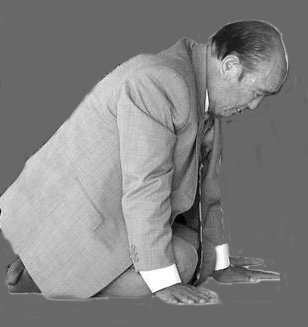Cheon Seong Gyeong 758
For what reason are we born? What
should be the focus of our life, and for
what purpose do we pass on? We can
never answer these questions without
God. Without God, we cannot find the
real motive in our life. The one who is
without a motive can neither reap the
fruit of his work nor have his value
recognized. A building is constructed
according to the designer’s blueprint. A
building that is built without reference
to the original blueprint cannot be what
the designer originally intended. (21-100,
1968.11.17)
Cheon Seong Gyeong 1176
I am accomplishing restoration
through indemnity by myself. The
world is not aware of this. By this meth-
od, restoring the individual, restoring
the family… I have been continuing.
The satanic world bears fruit according
to the seeds it has sown. If the Messiah
does not come to this world to save it,
there is no way to for it to be saved. Had
only people become one with me right
after the liberation of Korea, all Cains
on the levels of the individual, fam-
ily, tribe, ethnic people, nation and the
world could have been restored through
indemnity over a seven-year course.
Because of their disbelief, however, this
course was prolonged for forty years.
(138-216, 1986.1.21)
Exposition of the Divine Principle
3 Color Edition-The Red part
JESUS AND THE PERSON WHO HAS REALIZED THE PURPOSE OF CREATION
2.1 PERFECTED ADAM, JESUS AND THE RESTORATION OF THE TREE OF LIFE
Human history is the history of the providence of restoration. Its goal is the realization of the Kingdom of Heaven on earth when, at the end of history, the tree of life which was lost in the Garden of Eden will be regained. We can understand the relation between perfect Adam and Jesus by comparing the tree of life in the Garden of Eden with the tree of life to be restored in the Last Days.
Adam, had he realized the ideal of perfection symbolized by the tree of life in the Garden of Eden, and Jesus, symbolized by the tree of life in the Book of Revelation, would be identical in the sense of having realized the goal of creation. As such, they would have equal value.
2.2 JESUS, HUMAN BEINGS AND THE FULFILLMENT OF THE PURPOSE OF CREATION
Let us compare the value of Jesus with that of a person of perfect individual character. A fully mature person is perfect as God is perfect.11 Having the same divine nature as God. A fully mature person is unique in all the cosmos. Furthermore, since he is the lord of the entire natural world, which cannot realize its full value without him, he possesses the value of the cosmos. There is no greater value than that of a person who has realized the ideal of creation. This is the value of Jesus, who surely attained the highest imaginable value.
For there is one God, and there is one mediator between God and men, the man Christ Jesus. —I Tim. 2:5
2.3 IS JESUS GOD HIMSELF?
When Philip asked Jesus to show him God, Jesus said, “He who has seen me has seen the Father; how can you say, ‘Show us the Father?’ Do you not believe that I am in the Father and the Father in me?” Based on these biblical verses, many Christians have believed that Jesus is God, the Creator. Since Jesus is one with God and the incarnation of God, he may be understood to be God’s second self; but he is not God.
JESUS AND FALLEN PEOPLE A fallen person has nothing of the value of a true person who has completed the purpose of creation. Rather, he has fallen to such a lowly status that he looks up to the angels, who were created to be his subordinates. On the other hand, because Jesus came with the full value of a true person who has completed the purpose of creation, “All things are put in subjection under him.”23 A fallen person with original sin is stained with the condition through which Satan can attack him. On the other hand, Jesus, having no original sin, had no condition in himself for Satan to invade him. A fallen person cannot fathom the Will and Heart of God. At most, he can catch only a glimpse of them. In contrast, Jesus not only understood the Will and Heart of God thoroughly, he also experienced God’s Heart as his own reality in his daily life.
View slides 13 to 22 below for an illustrated presentation of the above content:
2007p1-CHAPT-7-Christology_revised-4-28-2014